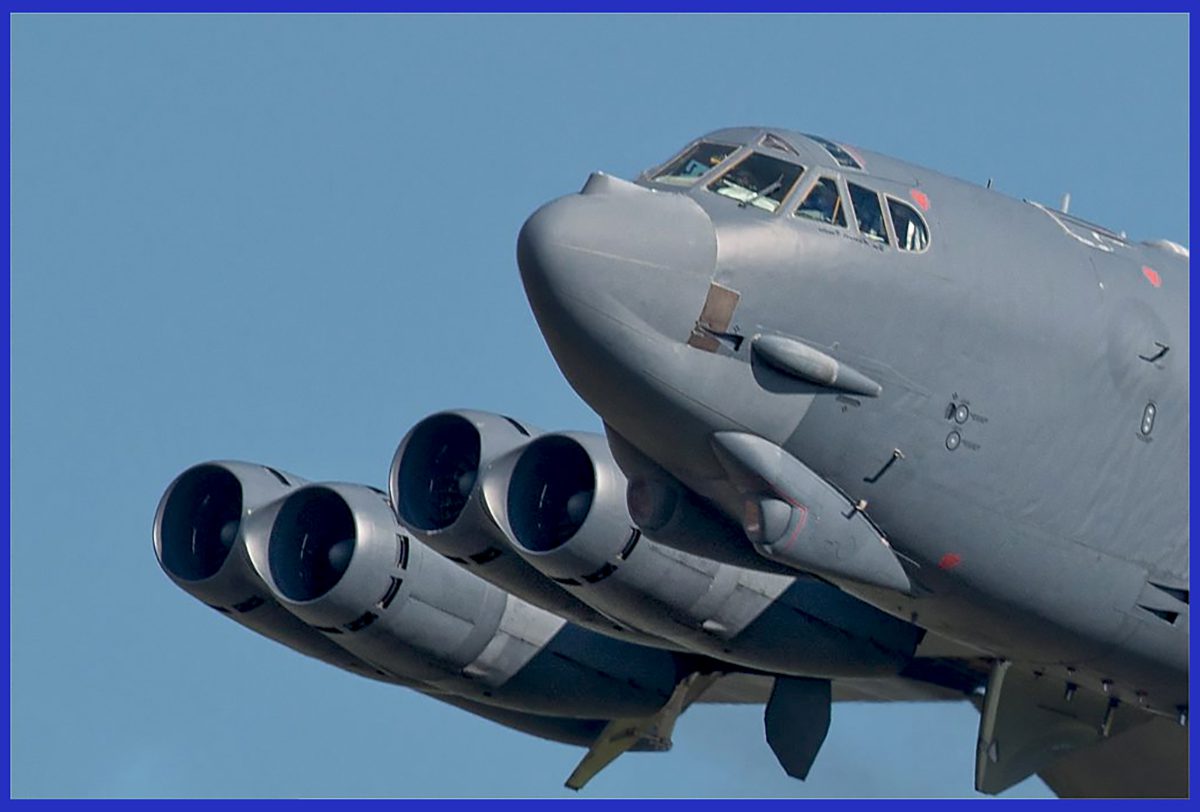The Boeing-manufactured bomber, often referred to as the “Buff” (Big Ugly Fat Fellow), serves as a testament to the enduring excellence of American aviation. This article Unveiling the Best of the Boeing B-52 Stratofortress, is an iconic long-range, subsonic strategic bomber that has held a central position within the United States Air Force (USAF) since its debut in the 1950s. Engineered for both nuclear deterrence and conventional strike missions, the B-52 has played a pivotal role in shaping American military history.
With a length measuring 159 feet and a wingspan of 185 feet, it is propelled by eight turbojet engines. Notably, it boasts a maximum takeoff weight exceeding 488,000 pounds, solidifying its status as one of the heaviest combat aircraft ever constructed. Moreover, the bomber’s endurance stands out, showcasing an impressive unrefueled range of approximately 8,800 miles.
The USAF has maintained the B-52 in its fleet since 1955. As of the year 2022, there are a total of 72 B-52 aircraft in active inventory. Among these, 58 are under the operational purview of active forces, specifically the 2nd Bomb Wing and the 5th Bomb Wing. Additionally, 18 B-52s are under the management of reserve forces, specifically the 307th Bomb Wing. Approximately 12 of these aircraft are held in long-term storage at the Davis-Monthan AFB Boneyard.

In 2010, a significant transition occurred when all B-52 Stratofortresses were relocated from the Air Combat Command (ACC) to the newly established Air Force Global Strike Command (AFGSC). The B-52’s enduring service can be attributed to its remarkable performance capabilities at high subsonic speeds and its relatively cost-effective operation. This longevity stands in contrast to the introduction of more advanced strategic bombers like the B-58 Hustler, B-1 Lancer, and B-2 Spirit.
The B-52’s armament capabilities are highly versatile, allowing it to carry both nuclear and precision-guided conventional munitions. Throughout its history, it has undergone adaptations for various roles, including strategic nuclear deterrence, close air support, and maritime patrol. The aircraft’s remarkable flexibility and adaptability have enabled it to maintain relevance for several decades. In 2025, the B-52 will celebrate 70 years of continuous service with its original operator. Following the last major upgrades conducted between 2013 and 2015, the bomber is expected to remain in service well into the 2050s.
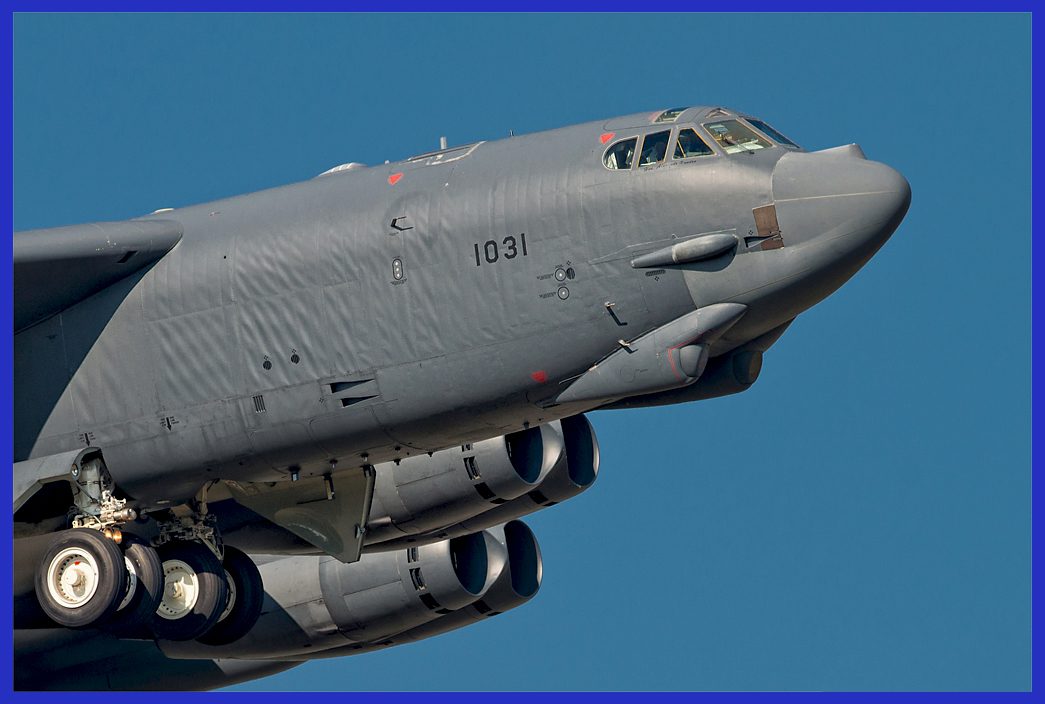
Notably, the B-52 has undergone multiple upgrades, encompassing avionics, engines, and weapons systems, all designed to ensure its continued effectiveness in modern warfare. Its longevity and adaptability have firmly established its status as an enduring symbol of American air power and a testament to Boeing’s engineering prowess. As the USAF continues to operate and upgrade the B-52, it maintains its vital role as a key component of the nation’s defence strategy.
The Development Story of the Boeing B-52 Stratofortress: A Long-range Bomber
The development story of the Boeing B-52 Stratofortress is a testament to the enduring success of a strategic bomber that has stood the test of time. The B-52’s origins trace back to the late 1940s when the United States Air Force (USAF) recognized the need for a long-range nuclear bomber to deter potential adversaries during the early years of the Cold War.
Concept and Design
The development of the B-52 commenced in the early 1940s with the XB-52 prototype, an initiative undertaken by Boeing in response to a request from the USAF for a new bomber design. On November 23, 1945, the Air Materiel Command (AMC) outlined the desired performance characteristics for a novel strategic bomber, one that could execute strategic missions independently, without relying on advanced or intermediate bases controlled by other nations. Subsequently, on February 13, 1946, the USAF issued invitations for bids on the prototype, drawing upon various specifications. This led to the submission of proposals by Boeing, Consolidated Aircraft, and the Glenn L. Martin Company.
On June 5, 1946, Boeing’s Model 462, a straight-wing aircraft with six turboprop engines, was chosen as the winner. On June 28, 1946, Boeing was awarded a $1.7 million contract to build a full-scale mockup of the new XB-52 and conduct preliminary testing. However, concerns arose within the USAF about the aircraft’s size and meeting design requirements. Boeing responded with two models, the Model 464-16 for nuclear missions and the Model 464-17 for general-purpose bombing. To reduce costs, the USAF chose the Model 464-17, adaptable for nuclear strikes. Boeing was later instructed to explore technological advancements, including aerial refuelling, speed improvements, extended range, and more.

Design Effort for the XB-52 Prototype
The USAF project officer reviewing the Model 464-40 was impressed, as he had been considering similar concepts. However, government concerns about high jet engine fuel consumption led Boeing to continue using the turboprop-powered Model 464-35 as the XB-52’s basis. General Howard A. Craig, Deputy Chief of Staff for Materiel, acknowledged turbojet propulsion as the future but had reservations about it for the B-52. He believed the jet engine hadn’t advanced enough to skip the intermediate turboprop stage. Boeing was still encouraged to explore turbojet studies, even without an immediate commitment to jet propulsion.
Despite discussions about revising specifications or conducting a full design competition with other aircraft manufacturers, General LeMay, who led Strategic Air Command in the 1950s, insisted on prioritizing performance over potential delays in engine development. To boost range, Boeing created the larger 464-67 model, suggesting that subsequent modifications could further enhance it in production. Following multiple direct interventions by LeMay, Boeing secured a production contract for thirteen B-52As and seventeen detachable reconnaissance pods on February 14, 1951. The last major design change, also at LeMay’s insistence, involved transitioning from the older tandem seating to a more conventional side-by-side cockpit layout, improving the copilot’s effectiveness and reducing crew fatigue.
The first XB-52 prototype took to the skies on April 15, 1952. Its maiden flight marked the beginning of an intensive testing and development phase. The aircraft demonstrated impressive performance and range, meeting the USAF’s requirements.
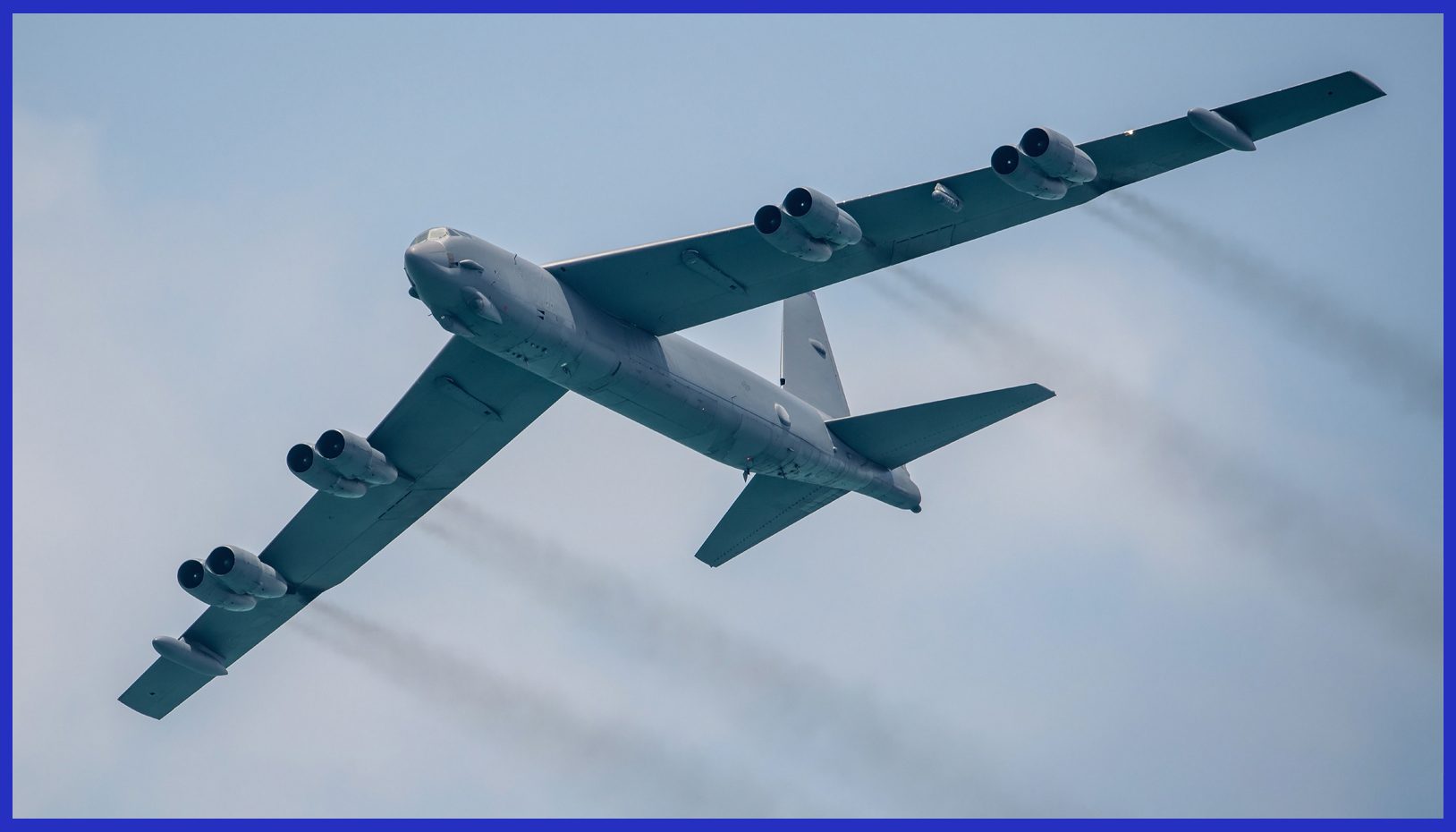
Production and Variants
The initial production version designated the B-52A, entered service in the mid-1950s. Subsequently, a series of variants and modifications were introduced, including the B-52B, B-52C, B-52D, B-52E, B-52F, B-52G, and B-52H, each incorporating advancements in engines, avionics, and armament. The extensive production effort engaged more than 5,000 companies, with subcontractors contributing to the construction of 41% of the airframe.
As production of the existing B-47 bomber phased out, the Wichita factory transitioned to B-52D production, while the Seattle plant handled 101 D-models and Wichita produced 69. Both facilities continued to manufacture the B-52E, with 42 units produced in Seattle and 58 in Wichita, along with the B-52F (44 from Seattle and 45 from Wichita). The Wichita plant achieved the highest production quantity for B-52G bombers, totalling 193. Production culminated in 1963 with the B-52H, resulting in a total of 742 aircraft built, in addition to the original two prototypes.
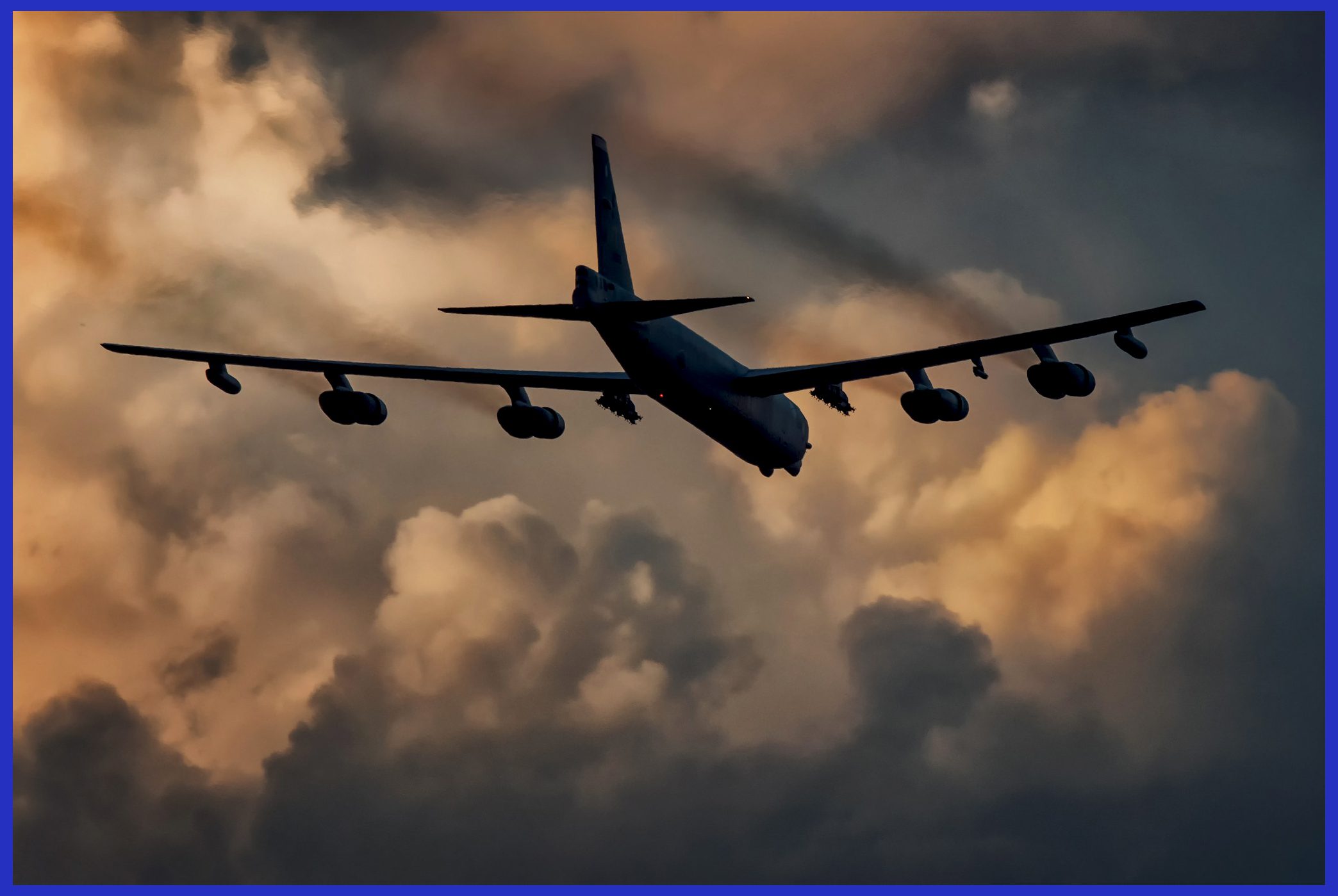
Continuous Upgrades
Boeing and the USAF have continually upgraded the B-52 over the years. Significant modernization efforts included the addition of more efficient engines, improved avionics, and enhanced weapons capabilities. These upgrades have extended the B-52’s operational life well beyond its original design expectations.
In July 2013, the USAF initiated a fleet-wide technological upgrade for its B-52 bombers known as Combat Network Communications Technology (CONECT), aimed at modernizing electronics, communications technology, computing, and avionics on the flight deck. CONECT upgrades encompass both software and hardware components, including new computer servers, modems, radios, data links, receivers, and digital workstations for the crew. One notable update is the AN/ARC-210 Warrior beyond-line-of-sight software programmable radio, capable of transmitting voice, data, and information in flight between B-52s and ground command and control centres. This enables the transmission and reception of data containing updated intelligence, mapping, and targeting information, eliminating the need for manually copying down coordinates when making in-flight target changes.
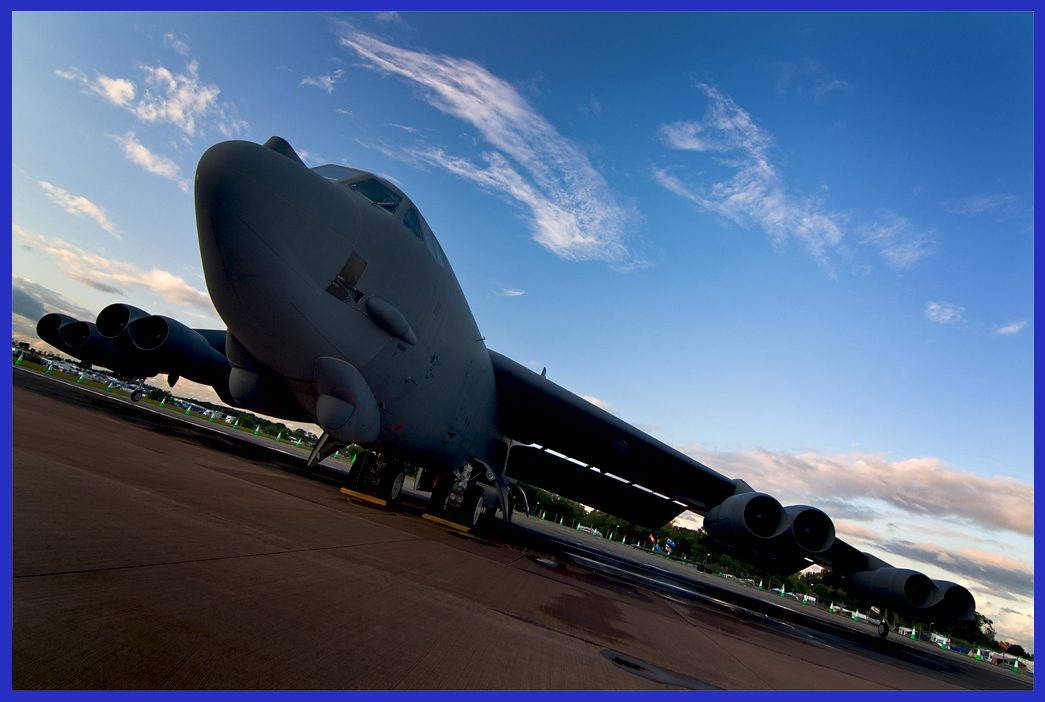
The ARC-210 system enables machine-to-machine data transfer, crucial during long-endurance missions where targets may relocate before the B-52 arrives. It can also receive information via Link-16. CONECT upgrades, costing US$1.1 billion overall, will span several years and cover 30 B-52s, with a goal of 10 upgrades annually by the USAF.
In addition to this, the USAF intends to modernize the sensors and displays of the B-52. These upgrades encompass the new APG-79B4 Active electronically scanned array radar, which replaces older mechanically scanned arrays, as well as the streamlining of the nose and removal of blisters that housed the forward-looking infrared/electro-optical viewing system. Furthermore, the upgrades include new pylons for advanced weapons and updated cockpit displays.
Internal Weapons Bay Upgrades
The B-52’s weapons upgrades encompass the 1760 Internal Weapons Bay Upgrade (IWBU), which delivers a 66% increase in weapons payload capability by utilizing a digital interface (MIL-STD-1760) along with a rotary launcher. The IWBU program is projected to have an estimated cost of approximately US$313 million. With the 1760 IWBU in place, the B-52 gains the capacity to internally accommodate eight JDAM 2,000-pound (910 kg) bombs, AGM-158B JASSM-ER cruise missiles, and ADM-160C MALD-J decoy missiles. This upgrade facilitates the deployment of precision-guided missiles or bombs directly from within the weapons bay, a departure from previous configurations where such munitions were carried externally on the wing hardpoints.
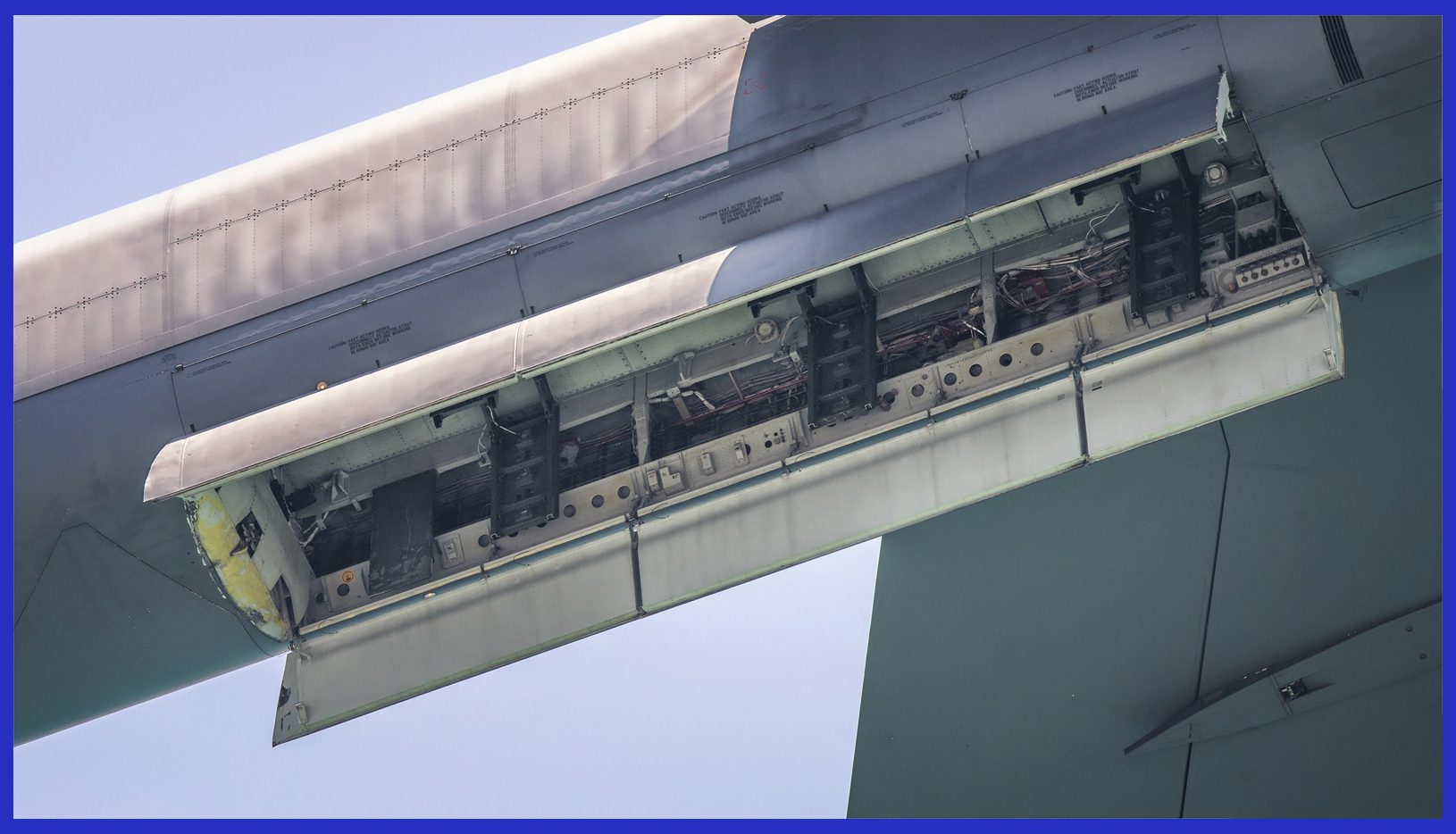
This enhancement expands the B-52’s capacity to carry guided weapons (Joint Direct Attack Munition or JDAM) and diminishes the requirement to transport guided bombs externally on the wings. During the first phase, a B-52 will be capable of carrying either twenty-four GBU-38 500-pound guided bombs or twenty GBU-31 2,000-pound bombs, while subsequent phases will accommodate the JASSM and MALD family of missiles. In addition to the increased load of smart bombs, the internal relocation from the wings results in reduced aerodynamic drag and, consequently, achieves a 15% reduction in fuel consumption.

Analyzing the Design of the Boeing B-52 Stratofortress
The design of the Boeing B-52 Stratofortress, which first flew in the early 1950s and remains in service today, is a testament to its engineering excellence and adaptability.
Swept-Wing Configuration
The B-52’s most distinguishing design feature is its swept-back wings. This particular design decision offers several benefits, such as enhancing high-speed performance, reducing drag, and increasing fuel efficiency. Moreover, the swept wings play a pivotal role in enhancing the aircraft’s stability and manoeuvrability. By 1964, significant modifications had been made to the wings as part of the Engineering Change Proposal (ECP 1050). Subsequently, in 1966, the aircraft underwent a fuselage skin and longeron replacement as outlined in ECP 1185, followed by the implementation of the B-52 Stability Augmentation and Flight Control program (ECP 1195) in 1967.
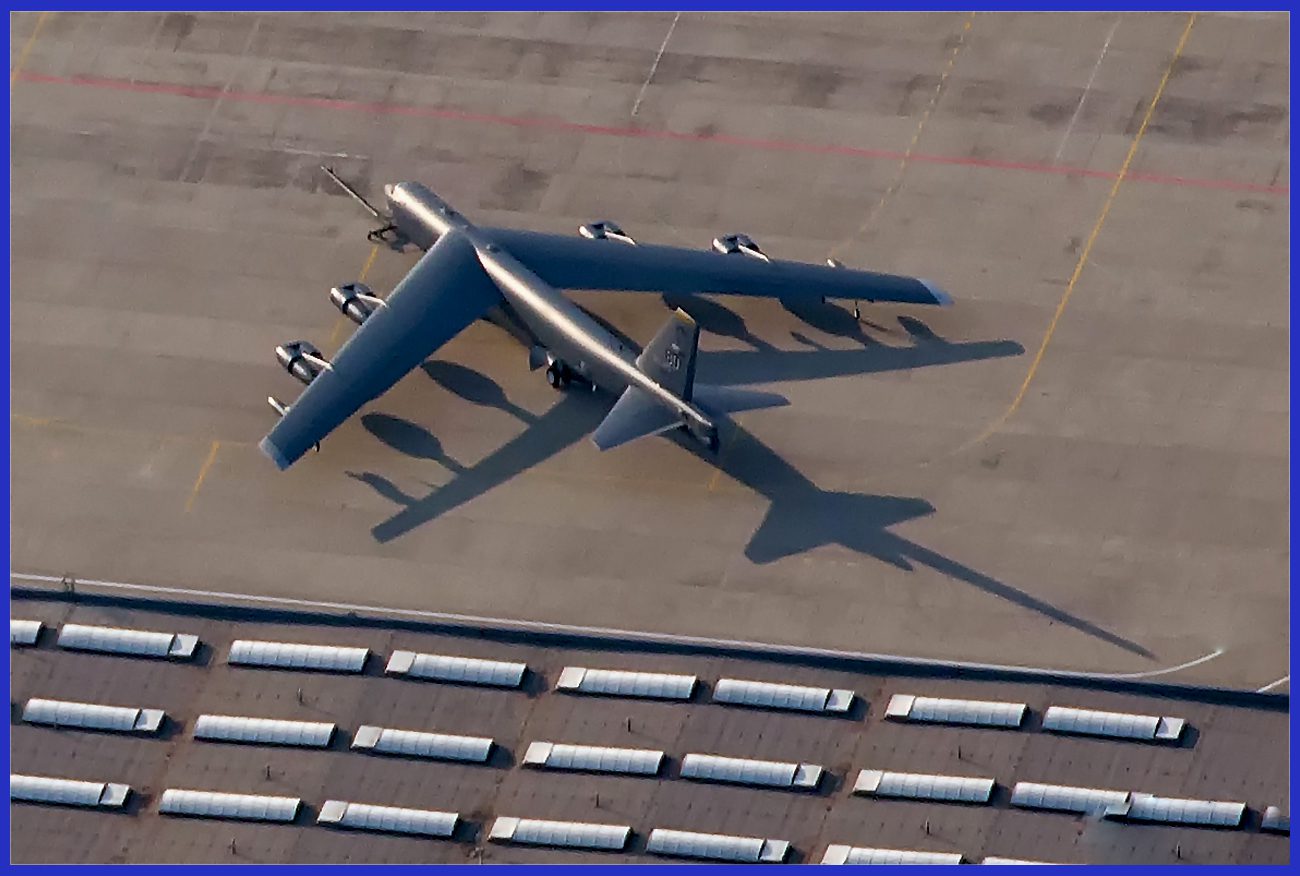
Officially, the B-52’s service ceiling is recorded as 50,000 feet (15,000 m); however, operational experience indicates that achieving this altitude while fully laden with bombs presents significant challenges. According to various sources, “The optimal altitude for a combat mission was approximately 43,000 feet (13,000 m), as exceeding this altitude would rapidly diminish the plane’s range.” Therefore, during operations, the ability to attain maximum range and altitude relies entirely on the skills and efforts of the B-52 crews.
Hence, by considering all those factors in mind, the B-52 design features high aspect ratio wings, which means they are long and relatively narrow. This design improves lift and efficiency, allowing the aircraft to carry heavy payloads over long distances. The wings also house fuel tanks for extended range.

Eight Turbojet Engines
Since May 1961, the B-52H began to be delivered to the USAF with cleaner-burning and quieter Pratt & Whitney TF33-P-3 turbofans, each with a maximum thrust of 17,100 pounds-force (76 kN). This redundancy ensures that the aircraft can continue flying even if some engines fail, enhancing its survivability during long-range missions. The engines are mounted in pairs under each wing. The eight engines of the B-52 are paired in pods and suspended by four pylons beneath and forward of the wing’s leading edge. The careful arrangement of the pylons also allows them to function as wing fences and delay the onset of stalls.

The recent Engine Upgrade program took a significant step forward when, on April 23, 2020, the United States Air Force (USAF) issued a request for proposals concerning the acquisition of 608 commercial engines, along with spare parts and support equipment. The objective was to finalize the contract by May 2021. This initiative, known as the Commercial Engine Re-Engining Program (CERP), attracted proposals from notable engine manufacturers, including General Electric with its CF34-10 and Passport turbofans, Pratt & Whitney with the PW800, and Rolls-Royce offering the F130.
Subsequently, on September 24, 2021, the USAF announced Rolls-Royce’s F130 as the selected winner and unveiled plans to procure 650 engines, consisting of 608 direct replacements and 42 spares, at a total cost of US$2.6 billion. As part of this upgrade, B-52H aircraft fitted with Rolls-Royce F130 engines will be reclassified as B-52Js.

Avionics and Radar
Throughout its history, the B-52 has undergone continuous modernization, incorporating advanced avionics and radar systems that have significantly improved its capabilities in navigation, communication, and precision strike missions. These upgrades have been instrumental in ensuring the B-52’s continued effectiveness in contemporary warfare. To enhance its performance at lower altitudes, the AN/ASQ-151 Electro-Optical Viewing System (EVS) was installed between 1972 and 1976. This system, comprised of a low light level television (LLLTV) and a forward-looking infrared (FLIR) system, was mounted in blisters under the noses of B-52Gs and Hs.
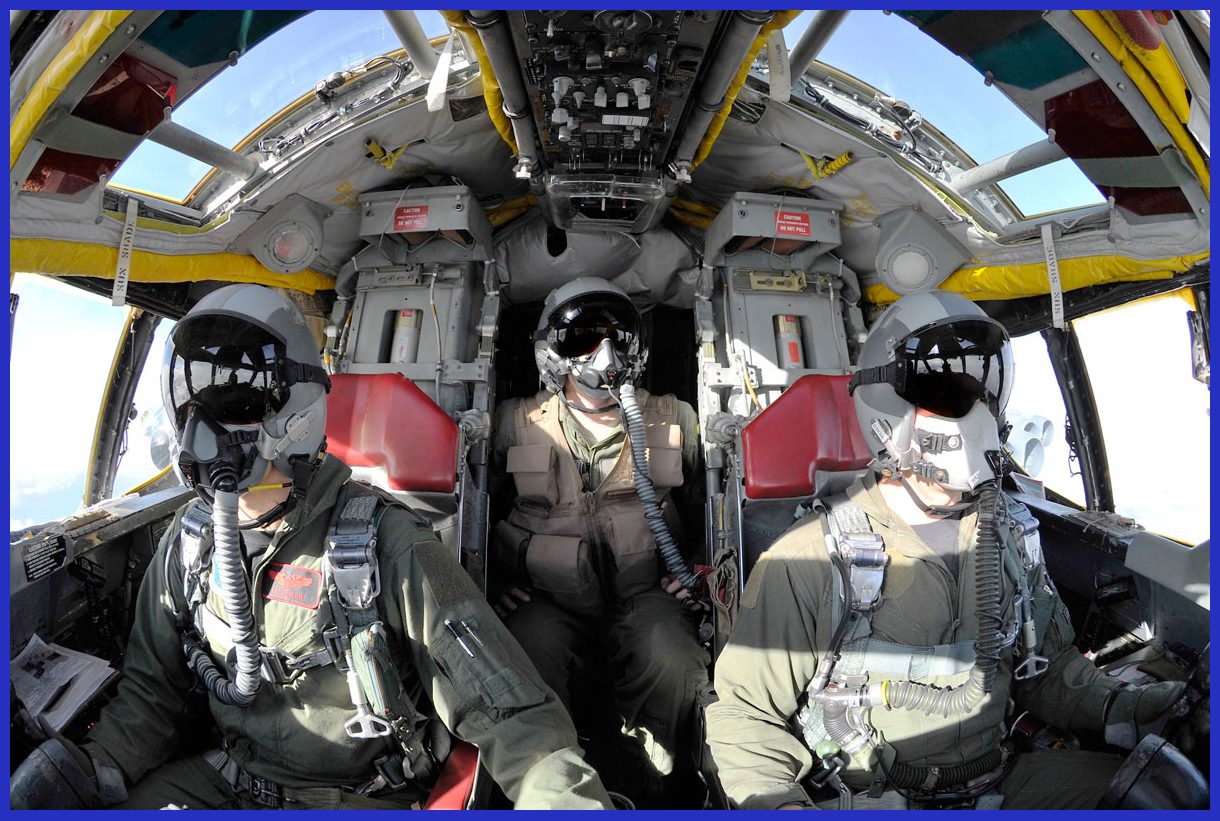
In the 1980s, GPS technology was integrated to further augment the B-52’s navigational capabilities. Additionally, the IBM AP-101 was incorporated as the main computer for the B-52. In 2007, the installation of the LITENING targeting pod significantly improved the aircraft’s ability to engage ground targets using various standoff weapons, including laser guidance, a high-resolution forward-looking infrared sensor (FLIR), and a CCD camera for target imagery. Notably, the B-52 now boasts the advanced APG-79B4 Active Electronically Scanned Array radar, replacing its older mechanically scanned arrays.

Bomb Bay
The B-52’s internal bomb bay has the capability to transport a wide array of both nuclear and conventional munitions. This versatility in carrying various weapon types has established it as a highly adaptable platform suitable for a broad spectrum of mission profiles. Notably, the B-52 possesses the capacity to “loiter” for extended durations, enabling it to deploy precision standoff and direct-fire munitions from a distance, in addition to conducting direct bombing runs.
Commencing in the 1980s, the B-52H aircraft underwent a series of modifications that enabled them to employ Harpoon missiles, alongside an extensive range of cruise missiles, as well as laser- and satellite-guided bombs, and unguided munitions. The Conventional Enhancement Modification (CEM) program further bolstered the B-52H’s comprehensive conventional weapons capabilities.
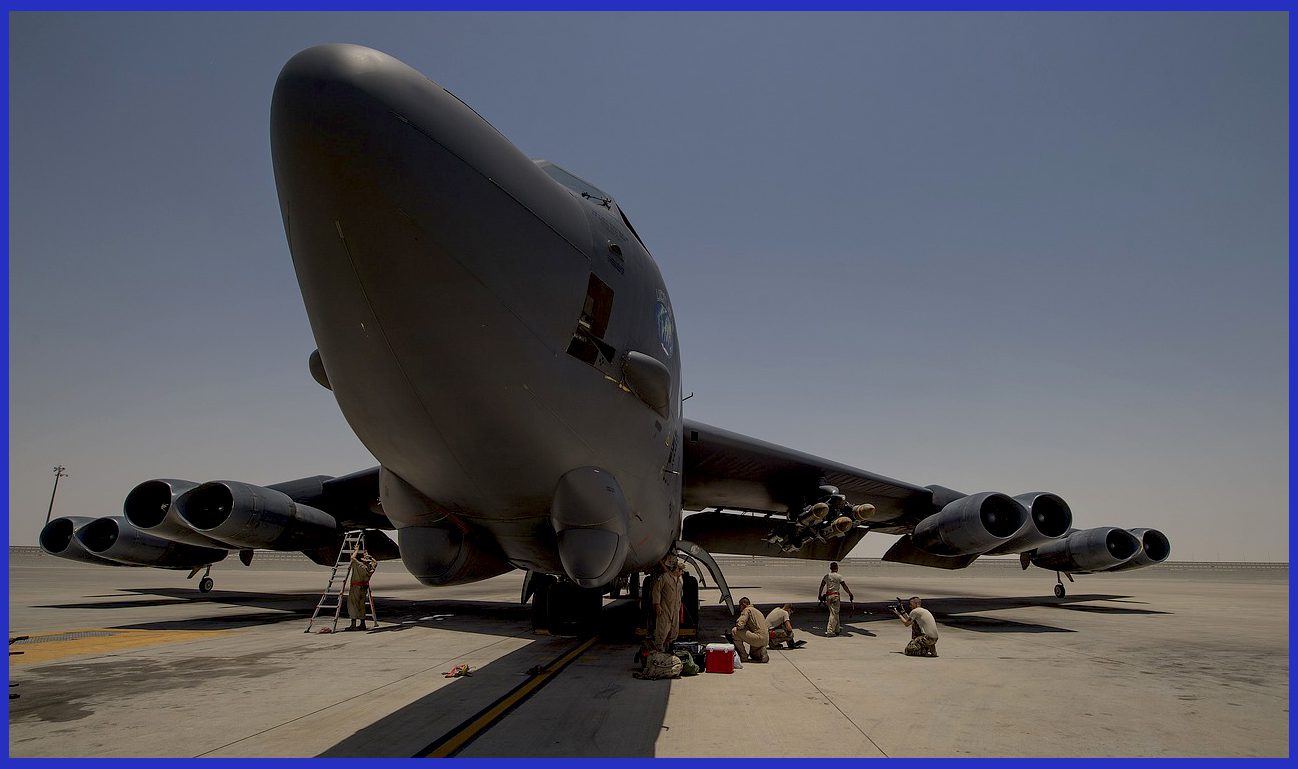
It introduced modified underwing weapon pylons akin to those utilized by conventional-armed B-52Gs, streamlining the integration of Harpoon and Have Nap (Popeye) missiles. Furthermore, it granted the B-52 the capability to carry next-generation weapons, including the Joint Direct Attack Munition (JDAM), Wind Corrected Munitions Dispenser guided bombs, the AGM-154 glide bomb, and the AGM-158 JASSM missile.
Tail Fin
The B-52’s large vertical tail fin provides essential stability and control during flight. Additionally, it serves as the housing for radar and electronic countermeasures equipment. Positioned high on the tail, the horizontal stabilizers play a significant role in contributing to the aircraft’s stability. Given the specific mission parameters of the B-52, it typically necessitates only modest manoeuvres without the need for spin recovery. Notably, the aircraft is equipped with a relatively small and narrow chord rudder, which provides limited yaw control authority.
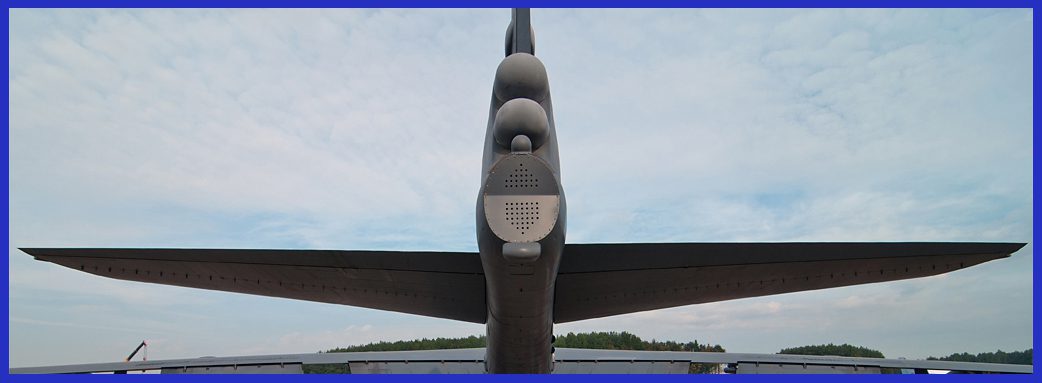
Adaptability
The adaptability of the B-52’s design stands out as a remarkable feature. This aircraft has undergone numerous modifications and upgrades in response to evolving military requirements. It has transitioned from its original role as a nuclear deterrent to becoming a versatile conventional bomber, showcasing the inherent flexibility in its design. For example, in the early model B-52s, the tail gunner occupied the traditional location at the rear of the plane, equipped with both visual and radar gun laying systems. In later models, the gunner was relocated to the front of the fuselage, and gun-laying operations were conducted exclusively by radar. But later upgrades since 1991 have removed the rear cannon from all operational B-52s.
In September 2006, the B-52 achieved a significant milestone by becoming one of the earliest US military aircraft to operate on a synthetic fuel blend at Edwards Air Force Base. On December 15, 2006, another B-52 from Edwards completed a mission with all eight engines powered by this synthetic fuel blend, marking the first time a USAF aircraft fully relied on it. On August 8, 2007, the B-52H received official certification from Air Force Secretary Michael Wynne, granting full approval for the use of the FT (Fischer–Tropsch process) blend. This achievement was part of the Department of Defense Assured Fuel Initiative, aimed at reducing crude oil consumption and obtaining half of its aviation fuel from alternative sources by 2016.

Operational Milestones of the Boeing B-52 Stratofortress
The Boeing B-52 Stratofortress has had a rich and extensive operational history since its introduction in the 1950s. Here is an overview of its operational history:
Cold War Deterrence (1950s-1991)
During the Cold War, the B-52 operated as a nuclear-armed strategic bomber, primarily tasked with deterring the Soviet Union. It maintained constant readiness, capable of carrying nuclear weapons on extended missions. Together with other US strategic bombers, B-52s executed airborne alert patrols under codenames like Head Start, Chrome Dome, Hard Head, Round Robin, and Giant Lance.
These patrols entailed maintaining positions at both high and low altitudes near the Soviet Union’s borders, guaranteeing a swift capacity for initiating first strikes or responding to a nuclear conflict. This played a pivotal role in the United States’ nuclear deterrence strategy, designed to forestall a large-scale war with the Soviet Union by relying on the concept of Mutually Assured Destruction.
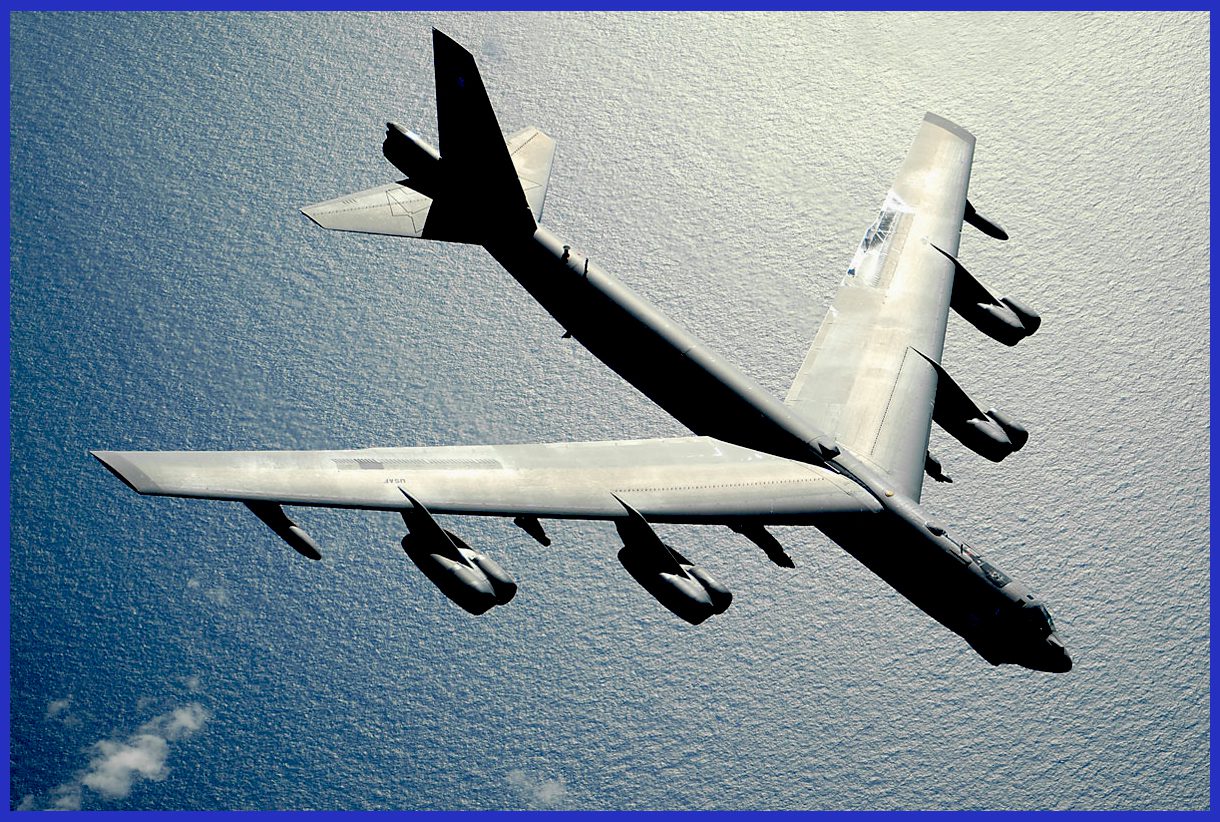
Vietnam War (1955-1975)
During the Vietnam War, the B-52 underwent adaptations for conventional bombing missions, including Operation Arc Light, targeting North Vietnamese positions. B-52s engaged in carpet bombing, aiding ground troops and disrupting enemy logistics. The peak of B-52 involvement was Operation Linebacker II (Christmas bombings) from December 18 to 29, 1972.
Over 12 days, B-52s completed 729 sorties, dropping 15,237 tons of bombs on North Vietnamese targets. Initially, 42 B-52s were allocated, often doubling during Linebacker II. This operation saw fifteen B-52s downed, five heavily damaged (one in Laos), and five moderately damaged, resulting in 25 crewmen lost. In total, 31 B-52s were lost in the war, including ten shot down over North Vietnam.
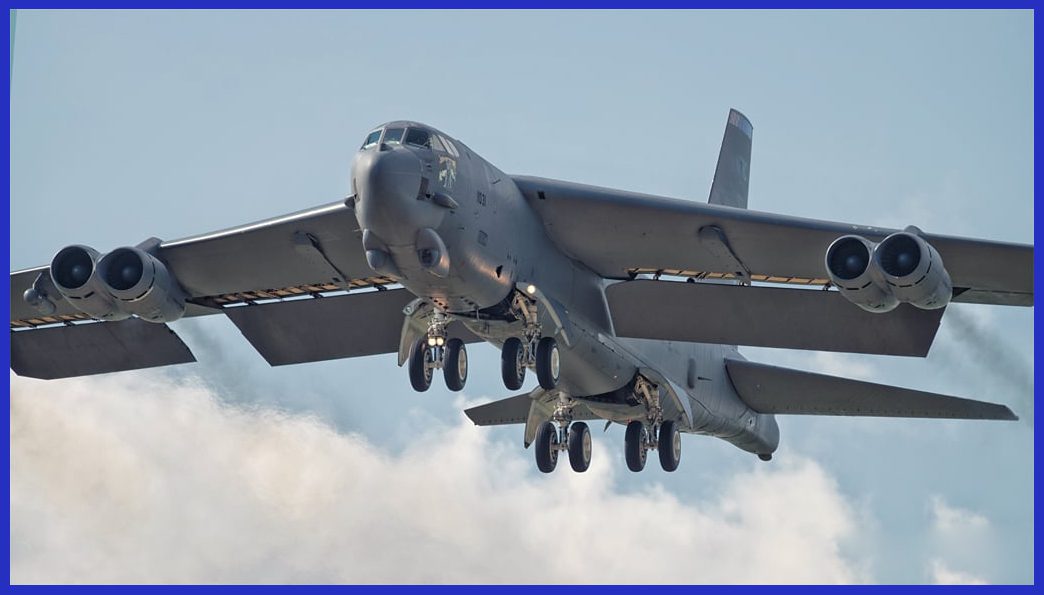
Strategic Arms Reduction Treaty (START) Era (1990s-Present)
With the end of the Cold War, the B-52’s nuclear mission evolved. Under the START treaties, the U.S. reduced its nuclear arsenal. B-52s were adapted to carry a smaller number of nuclear cruise missiles. The B-52’s conventional role continued to evolve, and it was used in various conflicts, including the Gulf War in 1991 and subsequent operations in Iraq and Afghanistan.
Post-Cold War Operations (1990s-Present)
The B-52 has been used for a wide range of missions, including strategic deterrence, close air support, and precision strikes. It has been adapted to carry advanced munitions and guided weapons. B-52s have been deployed in conflicts such as the Kosovo War, Iraq War, and the fight against ISIS in Iraq and Syria.
Operation Desert Storm: B-52 strikes played a vital role in the execution of this military operation. Commencing on January 16, 1991, a squadron of B-52Gs embarked from Barksdale Air Force Base, located in Louisiana. They conducted mid-air refuelling en route, engaged in conventional strikes against designated targets within Iraq, and subsequently returned to their home base. This arduous journey extended over a duration of 35 hours and encompassed a distance of 14,000 miles (23,000 km) for the round trip. This particular mission earned distinction for setting a record as the longest-distance combat operation.

The initial combat sorties of Operation Desert Storm were undertaken by seven B-52 aircraft. During these missions, they deployed a total of 35 AGM-86C CALCM standoff missiles, achieving an impressive success rate in the destruction of their intended targets, ranging between 85% and 95%. Following these initial engagements, additional sorties were launched from various strategic locations, including King Abdullah Air Base in Jeddah, Saudi Arabia, RAF Fairford in the United Kingdom, Morón Air Base in Spain, and the island of Diego Garcia within the British Indian Ocean Territory. These sorties were aimed at conducting bombing missions over Iraq as part of the broader military campaign.
In a mission of remarkable significance, B-52 aircraft were assigned to target Baghdad’s power stations and communication facilities. This operation involved the utilization of 13 AGM-86C conventional air-launched cruise missiles (CALCM). It was a lengthy endeavour, spanning 34 hours and covering an extensive distance of 16,000 miles (26,000 km) for the round trip. This mission originated from Andersen Air Force Base in Guam, marking a historic achievement as the longest distance ever covered in a combat operation.
Throughout the duration of Operation Desert Storm, B-52 aircraft executed approximately 1,620 sorties, making substantial contributions to the overall effort. They were responsible for the delivery of 40% of the total ordnance deployed by coalition forces during the operation.

Operation Allied Force: On March 24, 1999, at the commencement of Operation Allied Force, a significant military campaign, B-52 bombers played a pivotal role by conducting extensive bombardments on Serb targets situated across the Federal Republic of Yugoslavia. This included their active involvement in the Battle of Kosare, where their airstrikes were particularly instrumental.
Operation Enduring Freedom: The B-52 played a significant role in Operation Enduring Freedom in 2001. It brought a unique capability to the battlefield by staying at high altitudes for extended periods and delivering precise Close Air Support (CAS) through the use of advanced precision-guided munitions. This mission was traditionally reserved for fighter and ground attack aircraft. In the latter part of 2001, a fleet of ten B-52s played a crucial role by releasing a substantial portion of the total bomb tonnage employed in Afghanistan, further demonstrating their effectiveness in the campaign.
Operation Iraqi Freedom: which commenced on March 20, 2003, saw extensive involvement of B-52s in the Iraq/Southwest Asia region. To provide a more detailed account, on the evening of March 21, 2003, B-52H aircraft executed a substantial operation by launching a formidable salvo of at least 108 AGM-86C CALCM missiles targeted at locations within Iraq. This action represented a highly significant contribution to the overall mission.

Role of the B-52: A 21st Century Odyssey
B-52s undergo regular refurbishments at USAF maintenance depots like Tinker Air Force Base in Oklahoma. The USAF, even as it actively develops the new Long Range Strike Bomber, has plans to continue operating the B-52H until 2050. This timeline spans an impressive 95 years from the B-52’s initial entry into service, marking an extraordinary duration of service, a record unmatched by any aircraft, whether in civilian or military aviation history.
The United States Air Force (USAF) continues to rely on the B-52 for several reasons. It has proven to be both effective and cost-efficient, especially in scenarios where advanced air defences are not a significant factor. This is particularly relevant in missions conducted since the Cold War ended, especially when dealing with nations that possess limited defensive capabilities. Additionally, the B-52 has remained in service due to the absence of a reliable replacement.
One of its notable strengths lies in its ability to “loiter” over an area for extended periods, allowing it to deliver precision-guided munitions from a safe distance or engage in direct bombing when necessary. This versatility has made it a valuable asset in supporting ground operations during conflicts like Operation Iraqi Freedom. Notably, in the 2000–2001 period, the B-52 boasted the highest mission-capable rate among the three types of heavy bombers operated by the USAF. Specifically, the B-1 averaged a ready rate of 53.7%, the B-2 Spirit achieved 30.3%, and the B-52 maintained an impressive 80.5% readiness rate.
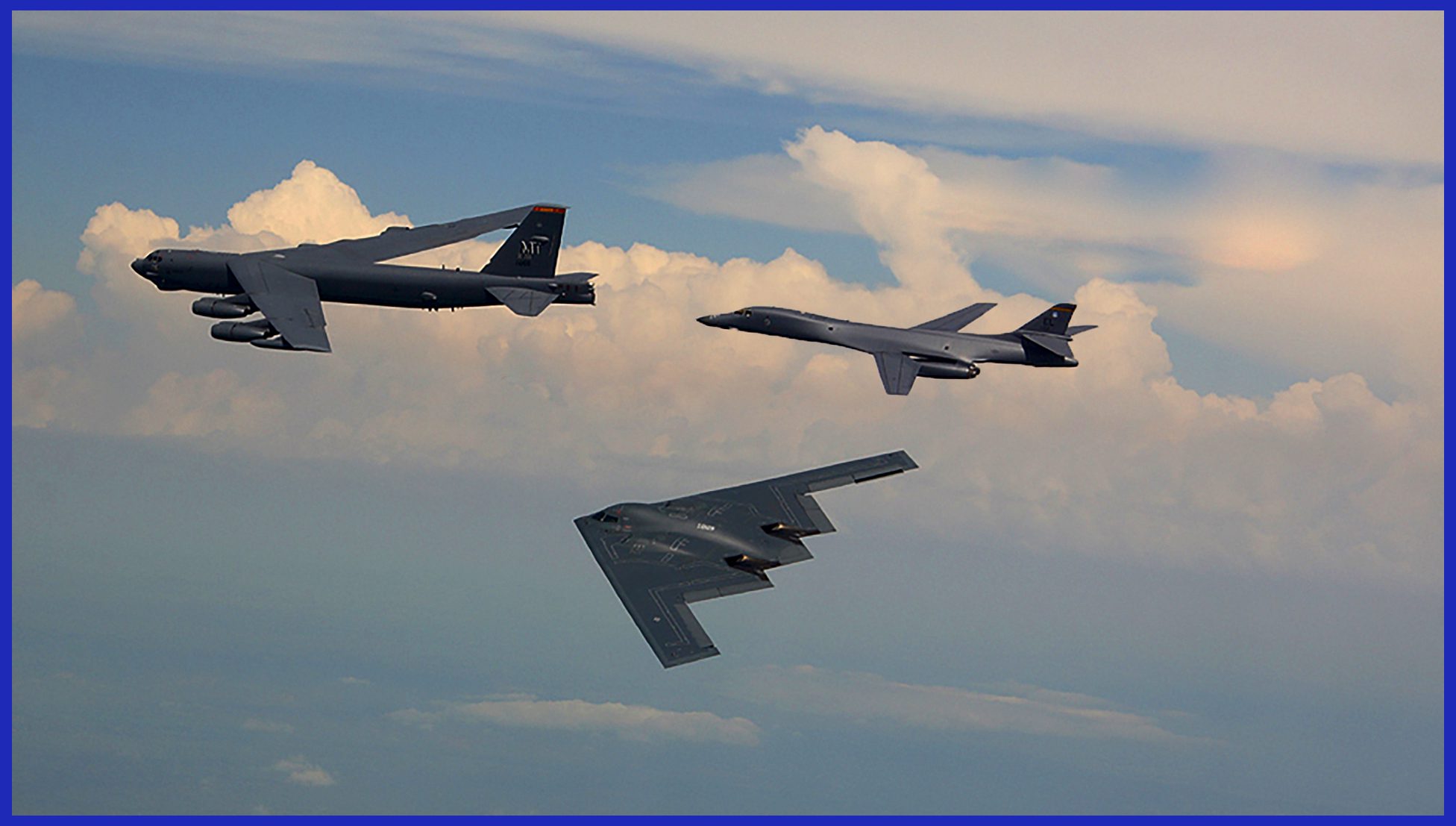
In terms of cost, the B-52 comes at a price of approximately US$72,000 per hour of flight, which is slightly higher than the B-1B’s cost of US$63,000 per hour but considerably less than the B-2’s cost of US$135,000 per hour. These factors collectively underscore the B-52’s enduring value and continued service in the USAF’s fleet.
On November 12, 2015, the B-52 aircraft initiated freedom of navigation operations in the South China Sea as a response to the presence of Chinese-made islands in that area. Chinese authorities had asserted jurisdiction within a 12-mile exclusion zone around these islands and demanded that the bombers depart from the region. However, the B-52s did not comply with this demand, as they did not recognize the jurisdiction claimed by China.
The recent expansion and modernization of the People’s Liberation Army Navy of China prompted the United States Air Force (USAF) to reevaluate its strategies for locating and engaging naval vessels.

On April 9, 2016, an undisclosed number of B-52s arrived at Al Udeid Air Base in Qatar, as part of Operation Inherent Resolve, which is a military intervention aimed at countering ISIL. The B-52s assumed a pivotal role in conducting heavy bombing operations, taking over from the B-1 Lancers that had been carrying out airstrikes but had rotated out of the region in January 2016.
Furthermore, B-52s were actively involved in U.S. airstrikes against pro-government forces in eastern Syria on February 7, 2018. They also played a crucial role in airstrikes against the Taliban during the 2021 Taliban offensive.
In a very recent development, ABC News reported in late October 2022 that the USAF had plans to deploy six B-52s to RAAF Tindal in Australia in the near future. This deployment would involve the construction of facilities to accommodate and support these aircraft.
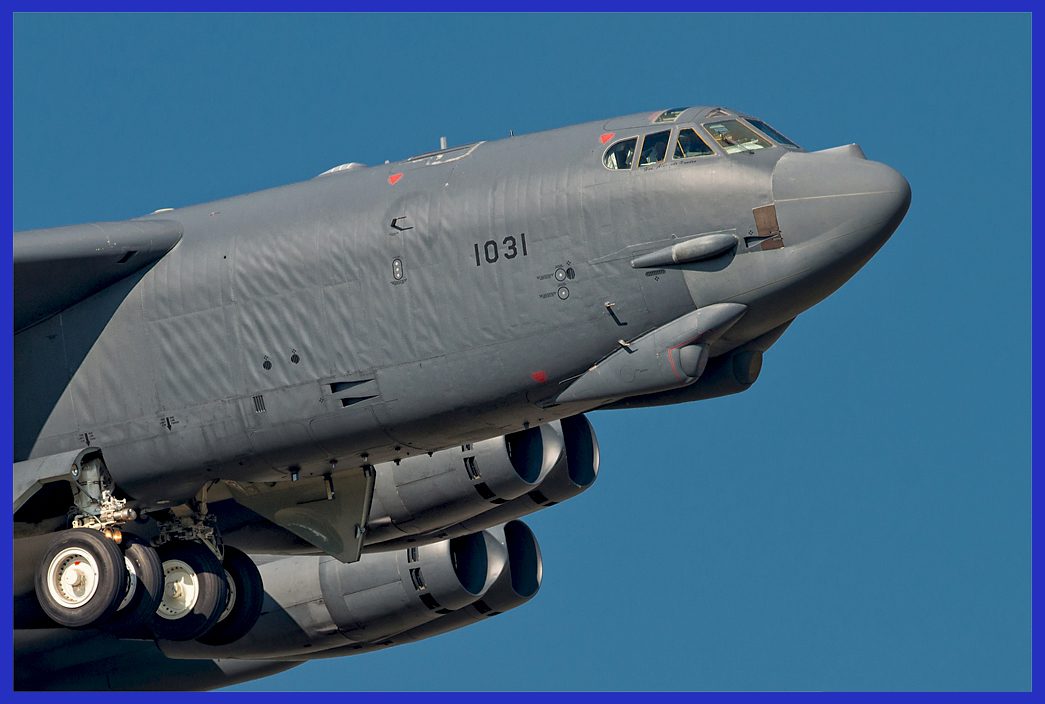
Variants of the Boeing B-52 Stratofortress
The Boeing B-52 Stratofortress has undergone various variants and modifications throughout its operational history.
While most of the B-52 variants are no longer in operational service, it’s essential to acknowledge their historical significance. These include the B-52A, NB-52A, B-52B/RB-52B, NB-52B, B-52C, RB-52C, B-52D, B-52E, JB-52E, NB-52E, B-52F, B-52G, and B-52H. Among these, the “H” variant stands out as the sole variant still actively employed, having undergone numerous updates and modifications. A total of 102 B-52Hs were manufactured, with the last one, B-52H AF Serial No. 61-40, rolling off the production line on October 26, 1962.
The B-52H has continued to evolve over the years, incorporating enhancements like Rolls Royce F130 engines, a variant of the AN/APG-82 radar, and upgraded communication and navigation equipment. This updated version, known as the B-52J, is presently in operational use, with deployments extending into 2023 and beyond.

Technical Specifications of the Boeing B-52H Stratofortress
- Country Of Origin: USA
- Crew: 5 members (pilot, copilot, weapon systems officer, navigator, electronic warfare officer)
- Length: 159 ft 4 in ( 48.5 m )
- Wingspan: 185 ft ( 56.4 m )
- Height: 40 ft 8 in ( 12.4 m )
- Wing area: 4,000 sq ft ( 370 m2 )
- Empty Weight: 83,250 kg ( 185,000 lb )
- Gross weight: 120,000 kg ( 265,000 lb )
- Max Takeoff Weight: 221,323 kg ( 488,000 lb )
- Fuel capacity: 181,610 L
- Powerplant: Equipped with eight Pratt & Whitney TF33-P-3/103 turbofan engines, each providing a thrust of 17,000 pounds-force (76 kN).
- Max Speed: 1,050 km/h ( 650 mph )
- Cruise speed: 819 km/h ( 509 mph )
- Ferry range: 16,327 km ( 10,145 mi )
- Combat range: 14,200 km ( 8,800 mi )
- Service ceiling: max 50,000 ft ( 15,000 m )
- Rate of climb: 6,270 ft/m ( 31.85 m/s )
- Armament: The B-52 Stratofortress has a versatile payload capacity, capable of carrying approximately 70,000 pounds (32,000 kg) of mixed ordnance, which includes a variety of munitions such as bombs, mines, and missiles. These munitions can be configured for different mission requirements, allowing the B-52 to deliver a range of weapons effectively. Some examples of these munitions include the AGM-84 Harpoon anti-ship missiles, AGM-142 Have Nap, the Joint Direct Attack Munition (JDAM), Wind Corrected Munitions Dispenser guided bombs, the AGM-154 glide bomb, and the AGM-158 JASSM. Additionally, in the future, the B-52 will incorporate the Long Range Stand-Off (LRSO) nuclear-armed air-launched cruise missile into its inventory.

Furthermore, seize this exclusive opportunity to acquire the exquisite large-scale 1/200 premium die-cast models of the formidable Boeing B-52H Stratofortress. These remarkable and iconic long-range military bombers boast an impeccable track record and are now available for purchase on AirModels with worldwide delivery. Click here now to secure your piece before the limited stock is depleted.
In conclusion, the Boeing B-52 Stratofortress bomber stands as a testament to both engineering excellence and adaptability. Over the course of its operational history, this iconic aircraft has evolved through various variants, from its early days as a nuclear deterrent during the Cold War to its versatility in conventional warfare during conflicts like the Vietnam War. Its enduring service, impressive longevity, and continuous upgrades have solidified its place in military aviation history.
The B-52’s ability to adapt to changing mission profiles and its role as a vital component of the U.S. nuclear triad highlights its continued relevance in an ever-evolving global security landscape. As it remains in service well into the 21st century, the B-52 Stratofortress serves as a symbol of innovation, resilience, and an enduring commitment to national defence. Its legacy as an aviation icon and its contributions to the defence of America will continue for several more decades, making it the only military bomber to serve for almost a century.

Important Announcement for Our Valued Readers!
After an article is published, it is possible that updates or changes may have occurred beyond the time of publication. Therefore, it is important to be aware that certain information in the article might be outdated. To ensure the most accurate analysis, it is highly recommended to verify the content with the latest sources available.
However, we are dedicated to delivering outstanding articles on military products and global updates. Maintaining quality and smooth operation requires resources. Your support sustains our efforts in providing insightful content. By purchasing high-quality products through our affiliated links, you help us keep our platform alive and acquire top-notch items. Your unwavering support is invaluable and inspires us to strive further.
We welcome your suggestions and requests for more information, as we value feedback from our readers. If there’s specific defence material or equipment not covered on our site, please share your request in the comments. We’ll strive to research and provide the required information. We sincerely thank you for your unwavering interest in our website, and we eagerly anticipate hearing from you! Enjoy your reading experience!
